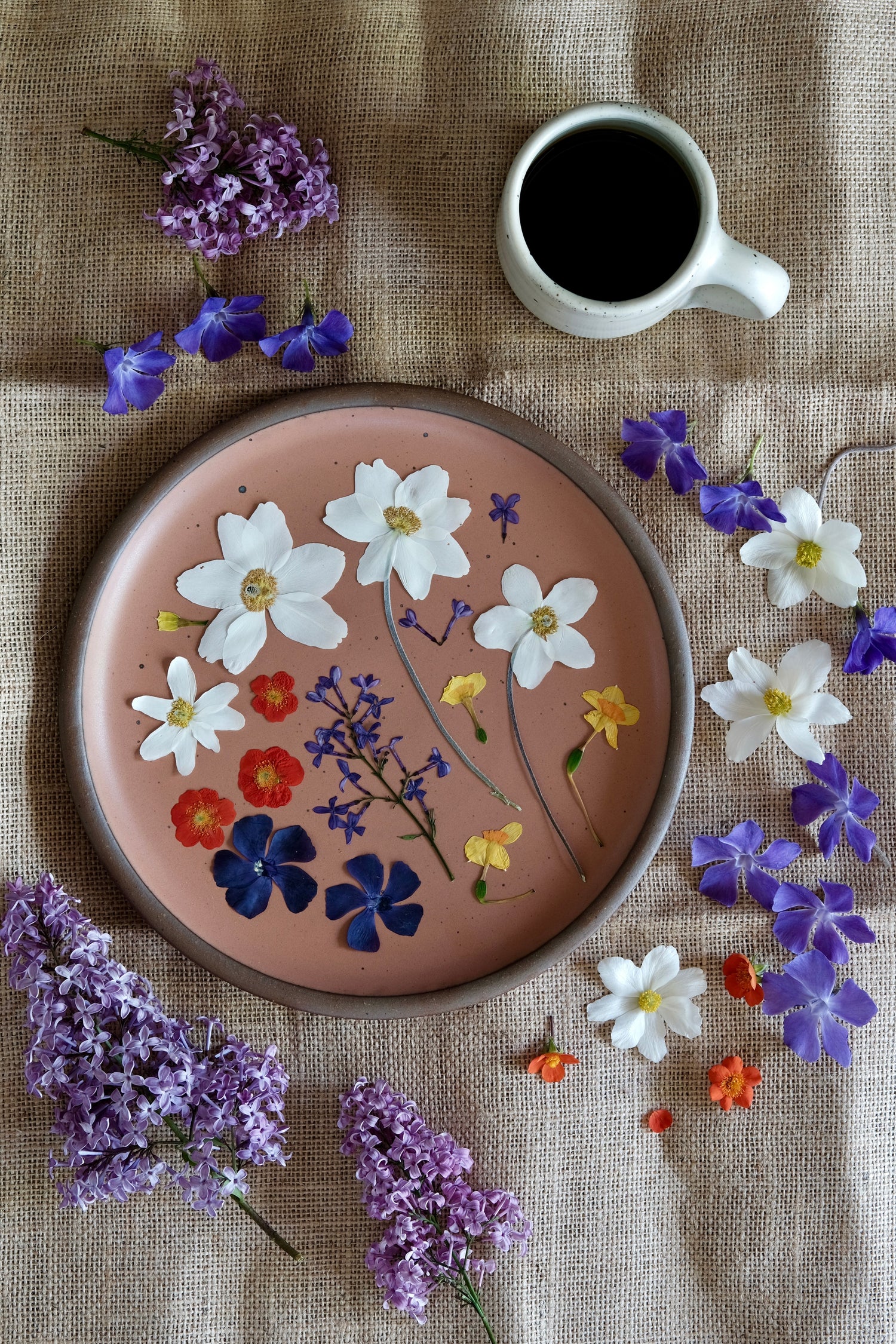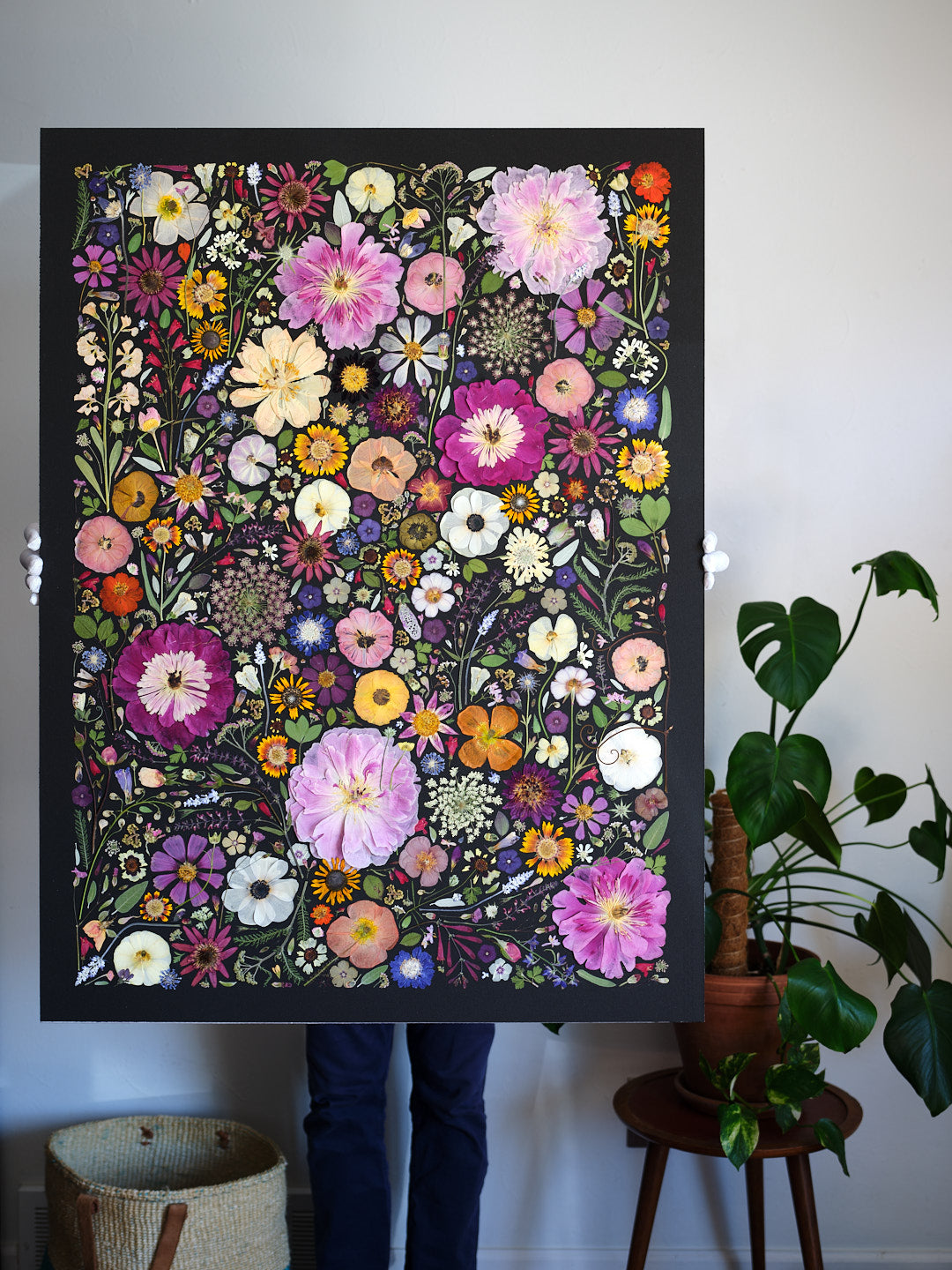But at the same time, some really cool things came out of this business; Keith learned how to frame, Rachel improved her photography skills, we established some really awesome relationships with local growers and florists, created new friendships with customers, and we found the best custom frames in all of the land. We became better pressers and learned systems and techniques that worked extremely well (which only came about because of other systems that did not work well), but most of all, we realized how anxiety-provoking this business model was for us.
Shipping these frames is perhaps the most stressful part of this business. Most people do not understand the inner workings of the logistical chaos that ensues when you drop a package off to get delivered across the country. The fact that you cannot insure a glass-on-glass frame (well, you can, but your chances of winning that claim through FedEx, UPS, or USPS, is very, very small), makes the shipping process extra worrisome. You may ask, “why do you not use acrylic?” We have tried. It scratches very easily. Acrylic is also a dust magnet. Our house has a forced air heating system, so particles of dust are always showing up out of seemingly, nowhere. Museum-grade acrylic could be a solution, but it comes with a very hefty price tag.
Having to source replacement flowers for bouquets that got to us in bad shape, particularly from shipped and elopement bouquets was often an unrewarding task when there was already so much to be done. We knew that in order to keep up as we were, we’d have to hire some people, but the realities of having to manage people did not strike us as fun. Rachel also started looking into pesticide usage on flowers imported into the United States and became quite alarmed. Direct quote, “There is absolutely no limit to the amount of pesticides sprayed on cut flowers imported into the U.S. because they are not considered a consumable.” Have you heard of dermal absorption? We will be doing more research on this but that’s for another post.
So now, we pivot. We will once again be pushed to learn new skills, but this time, these acquired skills will allow us to hone in on the things we love about being creators and pressing flowers. Rachel is going to embark on a journey of creating digital content and finally put her writing skills to the test, all the while learning more about her camera, studio lighting and audio, and Adobe Premiere. Keith is going to spend more time creating original designs without constraints and storyboarding different botanicals to press. We have already started to build a relationship with a small, local print company that uses a custom scanner (literally, this is the only one in existence in the world and uses military-grade scanning technology) to scan our originals that capture the depth, the shadows, and the colors. We are going to release a series of extremely detailed and unique prints highlighting local flower farms and the flowers they grow, as well as creating digital courses. We will be filming a lot of experimental pressing projects with flowers, veggies, fruits, mushrooms, foliage, and berries, and highlight new pressing methods we find to be effective along with ones we do not like. These will all go on our YouTube channel. We are very much looking forward to what the future will bring! Thanks for following along on our journey.





2 comments
Hi Tanya. Sorry this is so late. We have not looked at the comments, well ever. We thought we were getting a notification, but I guess our settings are wrong. Flowers will all fade. To what point is unknown as all flowers are different and the environment they are in will also depend, but flowers will fade. We let them as they were all natural and they are supposed to fade. :)
G’day, Keith and Rachael! :)
We are from Australia and we love your works. My husband and I used to press flowers too. I was wondering though how long the flowers remain their colours when they are finished (in a frame)? Do you have any experience with that?
Thank you so much 😊